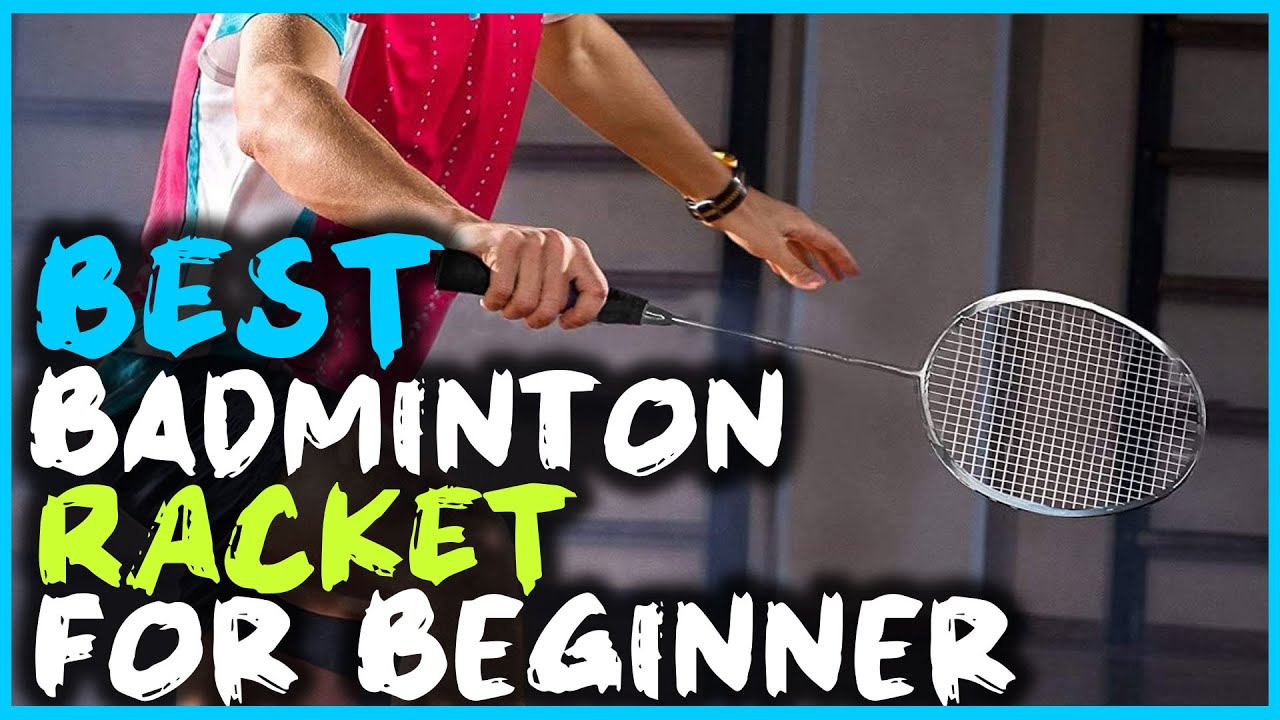The 3 Best Badminton Racket for Beginners (2020). Are you just starting out playing badminton? Not sure which racquet is best for you? Then this guide is for you.
We’ll give you the three best badminton racquets for beginners, so you can find the perfect one for your level and playing style. No matter how new you are to the game, one of these racquets will be a great fit for you.
Yonex Arcsaber Lite
Yonex is a reputable badminton brand, and their Arcsaber range of racquets is designed for players who want a lot of control over their game. All racquets in the Arcsaber range are evenly balanced, which makes them perfect for beginners.
The shaft is a medium flex, which provides the perfect amount of flexibility to generate power without making the racquet feel like a Hollywood prop. At only 83 grams, it’s nice and light, making it easy to control for any beginner.
Yehlex YX-3000 Nano
The Yehlex YX-3000 Nano is the best budget buy on this list. Yehlex has a long history of making quality racquets, not just for Badminton but Tennis as well – Boris Becker won his first Wimbledon title with one of their racquets.
The full carbon graphite build means it’s durable and lightweight. The isometric head shape offers a larger sweet spot for a more consistent clean hit, while the more flexible shaft means it’s even easier for beginners to generate power.
Victor Auraspeed 11 B
Victor is a renowned Badminton brand that falls second to none other than Yonex. for the last 6 to 7 years, in particular, Victor has been upping its game and producing top-quality racquets used by some of the world’s best players.
The Victor Auraspeed 11 B is a great choice for beginner players looking for quality and affordability. It is part of Victor’s Auraspeed range, designed for fast responses and easy handling. Although it is slightly head-light, it is well-balanced and offers great value for money.
Choosing a racquet for a beginner
Choosing the right racquet can come down to a number of important factors such as grip size, weight, flexibility and balance – all of which should be considered regardless of your skill level.
Some people may also factor in price when making their decision but it’s important to remember that the most expensive option isn’t always the best.
It’s often wise to purchase at least two of the same racquet so that you have a backup in case one needs to be restrung. With all of this in mind, make sure you choose the purchase that’s right for you.
Grip size
Badminton racquets come in different grip sizes, from G2 (the thickest) to G5 (the thinnest). For beginners, it’s best to start with a G4 grip size.
G4 is the most common grip size for badminton racquets, although it’s worth noting that Victor branded racquets come in G5 as standard.
G4 is a good middle ground that should suit anyone. Not many people would need a thinner grip than this but some might need it slightly thicker. The best way to achieve this is to add a thin overgrip on top of the existing grip.
Weight
Interestingly, each model of racquet a brand makes comes in various weights. These most commonly range from 2U to 5U, with 2U being the heaviest version of that racquet and 5U being the lightest.
Of all the weights, 4U is the most common weight that retailers stock and is what we’d recommend for any beginner Badminton player. If you end up switching racquets at any point, chances are it will also be a 4U weight class.
Staff flexibility
The long hollow shaft that connects the racquet handle/grip to the racquet head is one of the most important factors to consider when choosing a racquet.
Badminton racquet shafts are usually made from carbon fiber, which makes them strong but also flexible and able to bend. Badminton shafts have varying degrees of flexibility, including extra stiff, stiff, medium flex, and flexible shafts.
Racquet balance
Every Badminton racquet has a balancing point – the sweet spot. This is the point at which you can balance the racquet with one finger and have it stay horizontal without falling. The racquet balance can significantly affect the feel of the racquet and how it plays.
Badminton racquets usually come in three variants;
- Head-heavy
- Even balanced
- Head-light
When choosing a racquet for a beginner, I’d always go with an evenly balanced racquet. Others might find this controversial and argue that players should embrace what feels good to them, but I believe that an evenly balanced racquet is the best option for those just starting out.
If you’re playing with a head-light racquet, you might generate poor technique by swinging too hard and trying to overcompensate for the lack of power. This could lead to injuries in your shoulders and elbows.

